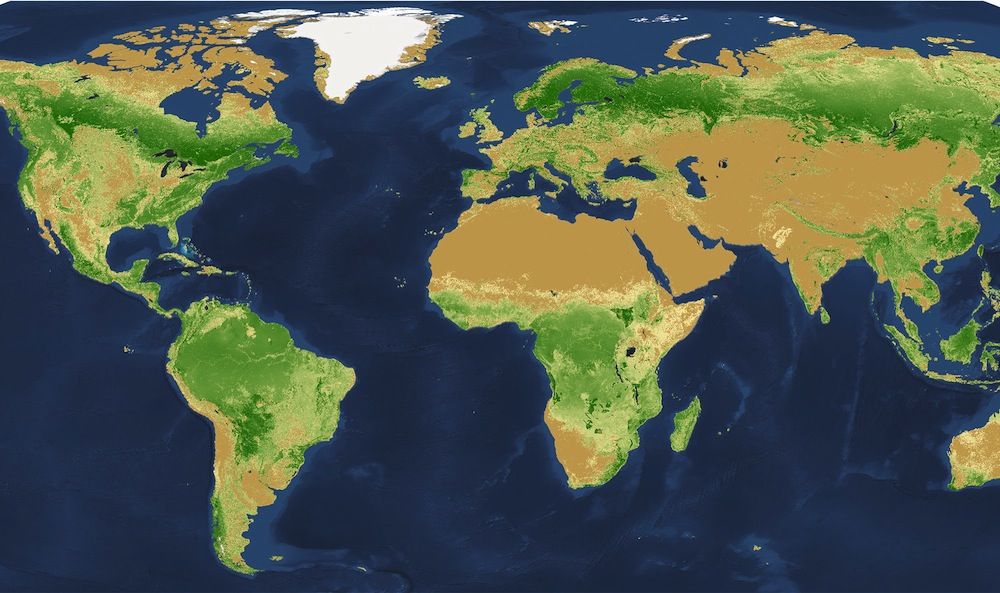Earth Lost Half Its Trees to Humans

A new global census of all the trees on Earth estimates that more than 3 trillion call this "pale blue dot" home. But the total number of trees on the planet has dropped by almost 50 percent since human civilization began.
The study is billed as the most accurate inventory of Earth's tree population to date, revealing that there are 3.04 trillion trees, which is roughly equivalent to 422 trees for every person on the planet. Researchers used satellite images, forest inventories and supercomputing technologies to calculate the number of trees on Earth. The new estimate found about 7.5 times more trees than were included in previous assessments, the scientists said.
The researchers also used projected maps of current and historic forest cover, which were provided by the United Nations Environment Programme, to estimate how much tree loss has occurred over time. They found that the total number of trees on Earth has fallen by close to 46 percent since civilization began. [Nature's Giants: Photos of the Tallest Trees on Earth]
"Trees are among the most prominent and critical organisms on Earth, yet we are only recently beginning to comprehend their global extent and distribution," said study lead author Thomas Crowther, a postdoctoral fellow at the Yale School of Forestry & Environmental Studies in New Haven, Connecticut.
The tree census will help scientists better understand the distribution of animal and plant species in the world, the effects of climate change, and how trees shape their environments, the researchers said.
In addition, the findings could help scientists study the role of trees in the global carbon cycle, the researchers said. Forests absorb and store carbon dioxide from the atmosphere during photosynthesis and then produce and release oxygen as a by-product. As such, trees play a key role in mitigating the effects of greenhouse gases in the atmosphere.
"They store huge amounts of carbon, are essential for the cycling of nutrients, for water and air quality, and for countless human services," Crowther said. "Yet you ask people to estimate, within an order of magnitude, how many trees there are, and they don't know where to begin. I don't know what I would have guessed, but I was certainly surprised to find that we were talking about trillions."
Sign up for the Live Science daily newsletter now
Get the world’s most fascinating discoveries delivered straight to your inbox.
The study also found that the areas with the highest density of trees are in the subarctic regions of Russia, Scandinavia and North America. The largest forested areas, however, are located in the tropics, which play host to 43 percent of the world's trees, the scientists said.
Human activity is the main reason for the disappearance of trees, primarily through deforestation, land-use changes and forest-management practices, the researchers said. These effects combined contribute to the loss of 15 billion trees worldwide every year, the scientists added.
"We've nearly halved the number of trees on the planet, and we've seen the impacts on climate and human health as a result," Crowther said. "This study highlights how much more effort is needed if we are to restore healthy forests worldwide."
Scientists undertook the study after a youth group called Plant for the Planet approached Crowther asking for a more accurate estimate of the world's trees than what was available at the time. The previous estimate of 400 billion trees didn't include forest inventories from the ground, the researchers said, but the new study does incorporate that information.
The findings were published online today (Sept. 2) in the journal Nature.
Follow Live Science @livescience, Facebook & Google+. Original article on Live Science.

Elizabeth Howell was staff reporter at Space.com between 2022 and 2024 and a regular contributor to Live Science and Space.com between 2012 and 2022. Elizabeth's reporting includes multiple exclusives with the White House, speaking several times with the International Space Station, witnessing five human spaceflight launches on two continents, flying parabolic, working inside a spacesuit, and participating in a simulated Mars mission. Her latest book, "Why Am I Taller?" (ECW Press, 2022) is co-written with astronaut Dave Williams.











